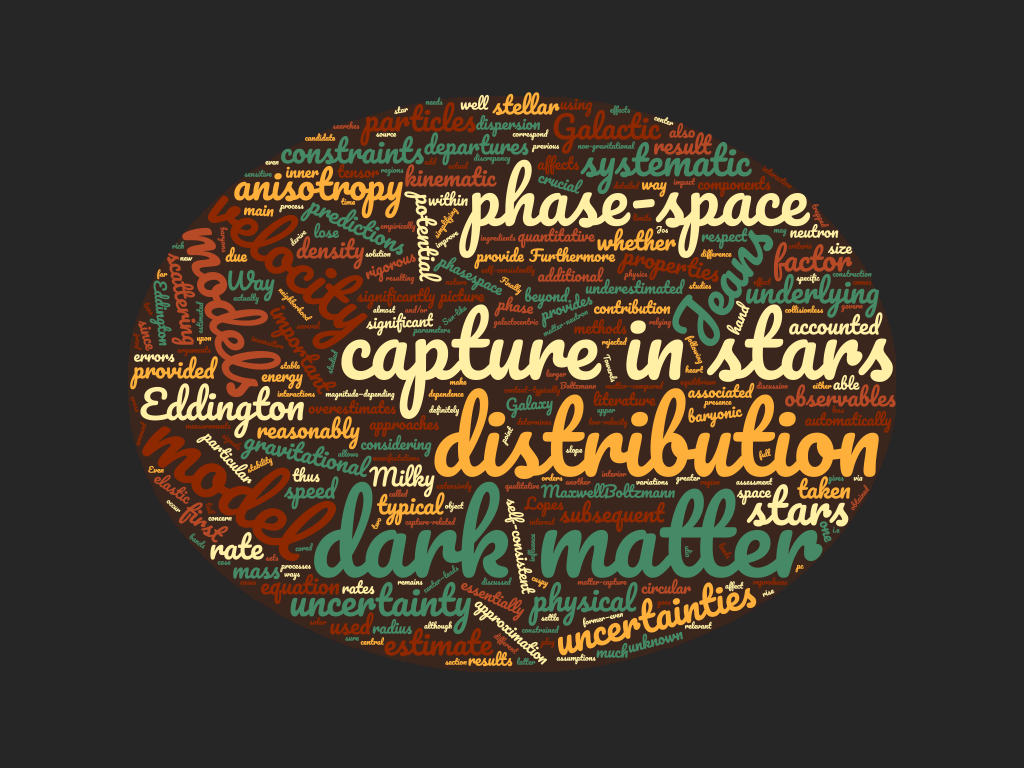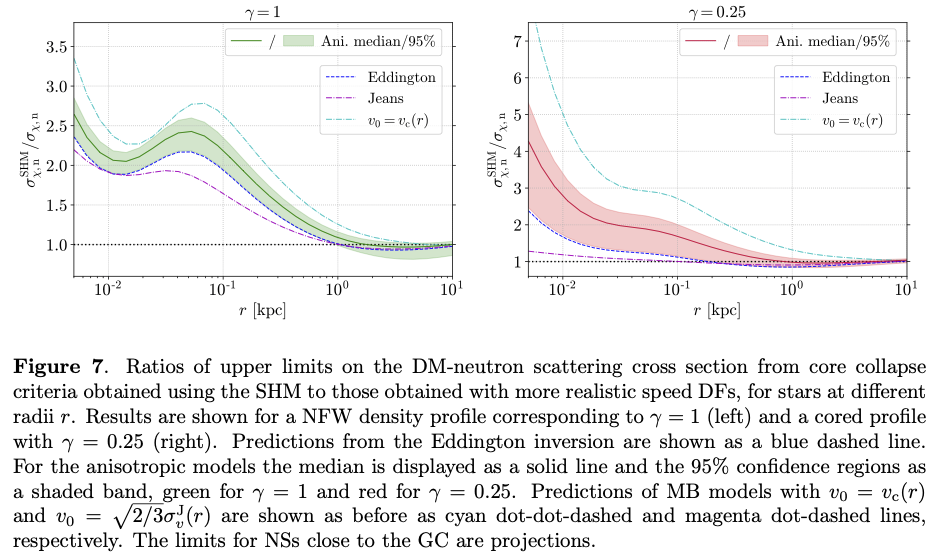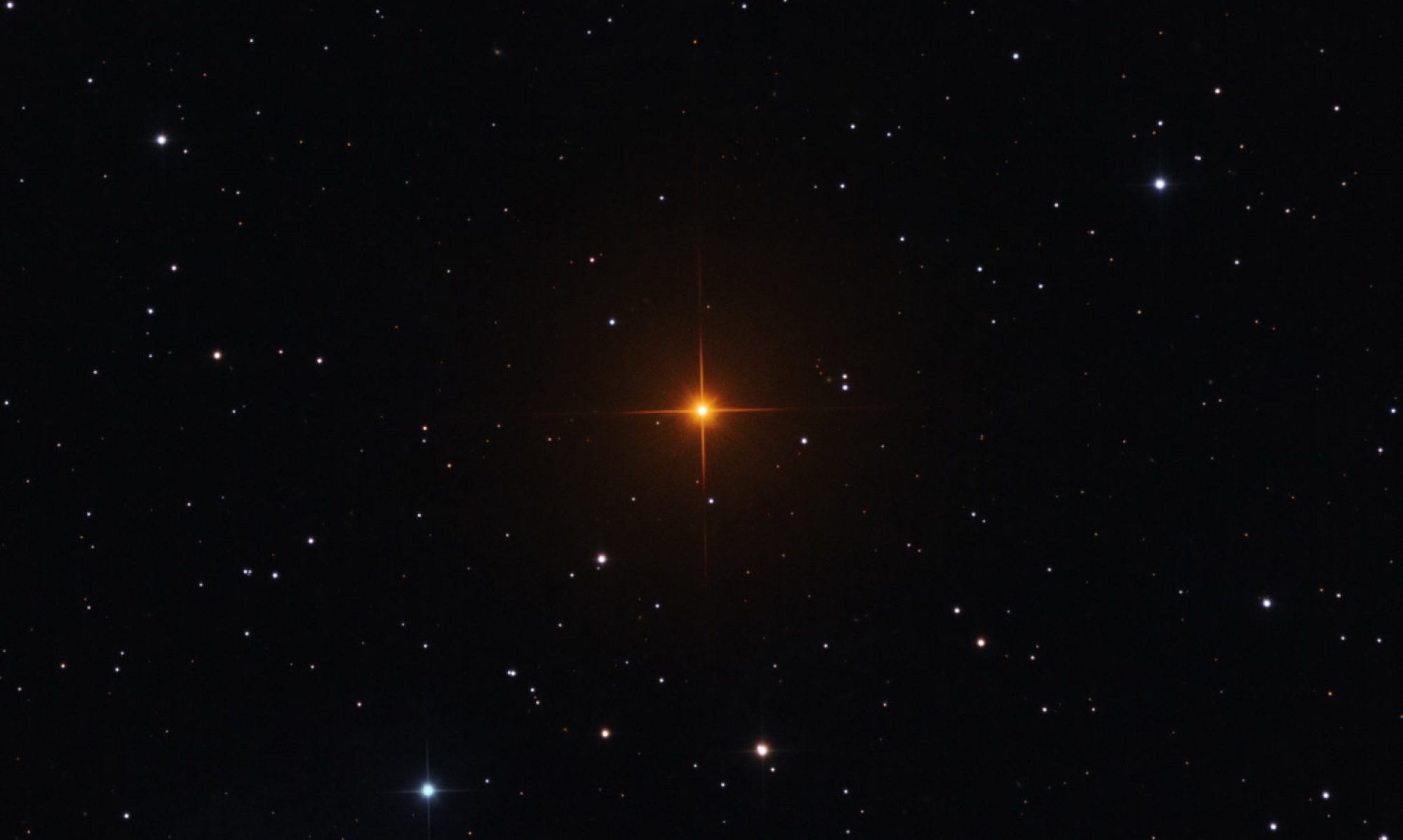
Written by Thomas Lacroix.
Summary of the paper with the same title published in JCAP.
arXiv: 2007.15927
In the presence of non-gravitational interactions between dark matter (DM) and the standard sector, DM particles which permeate the Galactic halo can lose energy via elastic scattering with stellar matter, and wind up trapped in the gravitational potential wells of stars. This process is called DM capture, and has been extensively studied in the literature due to its ubiquity in studies that concern the effects, manifestations and/or signals of DM in stars. If they lose enough energy through elastic scattering with stellar matter and settle down in the star’s interior, DM particles may affect the well-known physical processes that govern stellar physics. This gives rise to a rich new phenomenology which can be used to explore the nature of DM itself.
In this work, in an effort to add some quantitative arguments to the discussion of the dependence of dark matter capture on the underlying velocity distribution function, we have estimated systematic uncertainties, from dark matter phase-space modeling, on dark matter constraints based on capture in stars, by using Eddington-like equilibrium phase-space models. These models are based on first principles and their main ingredients are the dark matter density profile and the total gravitational potential, so they self-consistently account for kinematic constraints on the Milky Way. As a result, although they are based on simplifying assumptions, these models are physically motivated and provide a next-to-minimal picture of the properties of the Galactic phase-space relevant to dark matter searches, with respect to standard approaches used in the dark matter literature. These models essentially address several problems at once: first the underlying mass model of the Milky Way constrained by kinematic measurements is by construction accounted for, so that the resulting phase-space distribution function is able to capture variations of the typical dark matter speed as a function of galactocentric radius, in a self-consistent way. Moreover, departures from the Maxwell-Boltzmann approximation, which is at the heart of the standard halo model, are automatically taken into account. Furthermore, the unknown anisotropy of the dark matter velocity tensor, which is an additional source of uncertainties on the phase-space distribution function, can be accounted for with these self-consistent prediction methods. This goes beyond approaches that empirically quantify departures from the standard halo model in the solar neighborhood, and provides a global physical picture of the dark matter phase space in the Galaxy and the associated systematic uncertainties on dark matter-capture observables. Our main results are the following:
- We have shown that using a Maxwell-Boltzmann distribution with a very simple estimate of 220 km/s for the typical dark matter speed—the standard halo model—in a region where it is expected to be significantly different based on the underlying mass content—typically at the Galactic center—leads to significant errors on subsequent results. For a Sun-like star within a few pc of the Galactic center, the capture rate can be underestimated by up to almost two orders of magnitude—depending on the dark matter density profile, dark matter candidate mass and the type of interaction with ordinary matter—compared with predictions from Eddington-like models. Even for neutron stars, which are less sensitive to the speed distribution, the capture rate can be underestimated by a factor ~2.5-4, thus overestimating subsequent upper limits on the dark matter-neutron scattering cross section by the same amount. This definitely needs to be taken into account and cannot be simply neglected based on the usual qualitative argument that capture in neutron stars is insensitive to the detailed properties of the phase-space distribution function. Here we have provided a quantitative estimate of this effect for the first time.
- We have shown that Maxwell-Boltzmann models that go beyond the standard halo model, i.e. which have a velocity dispersion that is either obtained from the circular velocity or the Jeans equation, can in some cases improve upon the standard halo model, but not always. On the one hand, the Maxwell-Boltzmann model based on the circular velocity systematically overestimates the low-velocity tail of the phase-space distribution function with respect to Eddington-like models, and thus overestimates the capture rate at any radius by a factor 2-3. On the other hand, we have shown that the Jeans Maxwell-Boltzmann model reproduces reasonably well (within a few tens of %) the Eddington result for a cuspy profile. For a cored profile, the influence of the baryonic components in the central regions is greater, and the Jeans model is not able to account for the departures of the phase-space distribution function from a Gaussian distribution that occur in the inner Galaxy. Still, even in that case the discrepancy between the Jeans model and the Eddington result remains smaller than for the standard halo model, and below a factor 2. Therefore, the Jeans model provides a very minimal way to estimate the phase-space distribution function that works reasonably well, provided the contribution of baryons to the gravitational potential is not much larger than that of the dark matter.
- Beyond the uncertainty on the inner slope of the dark matter density profile, which by far dominates the uncertainty on capture rates, the most important contribution to systematic errors on capture-related observables actually comes from the estimate of the typical speed of dark matter particles in the halo. Regardless of the actual model, it is crucial to make sure that capture rates do account for kinematic constraints on the target of interest, whether one is considering the Milky Way or another object. This is automatically accounted for in Eddington-like models. It can also be reasonably taken into account by considering a Maxwell-Boltzmann model with a velocity dispersion solution to the Jeans equation, provided the phase-space distribution function does not depart too much from a Maxwell-Boltzmann distribution due to the baryonic components, as discussed in the previous point. Furthermore, we have shown that properties of the dark matter phase space, such as the anisotropy of the dark matter velocity tensor, also play an important part in shaping the phase-space distribution function of dark matter in specific ways, and can have a significant impact on subsequent observables. In particular, we have shown that the uncertainty on the essentially unconstrained anisotropy leads to a systematic uncertainty of up to a factor 2 on capture rate predictions.
- Finally, an additional very important difference between predictions relying on the Maxwell-Boltzmann approximation and Eddington-like methods is that the latter provide full phase-space models, whereas the former — even the Jeans model — do not. This allows for a rigorous assessment of whether these models correspond to stable solutions of the underlying collisionless Boltzmann equation. This is crucial since it determines whether the phase-space distribution function used to derive constraints from capture is physical or not, and affects the size of the associated systematic uncertainties, which can only be trusted if they are based on physical models. In particular, this affects significantly the size of uncertainty bands from the unknown anisotropy, since some sets of anisotropy parameters must be rejected based on stability criteria.


